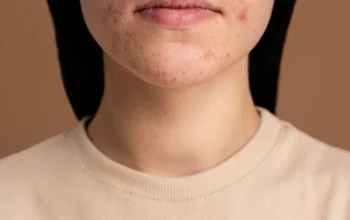Acne has been a scourge of our teenage years. The unsightly bumps and pimples make us self-conscious about our appearance. However, there are different types of acne with different stages of severity. Let’s take a closer look at the four types of acne.
The first type is inflammatory acne. With this type, hair follicles are blocked by the sebaceous glands and inflammation spreads throughout the sebaceous gland. As a result, blackheads and whiteheads may form, which are different from pimples, in which white blood cells invade the inflamed hair follicles. Typically, if the blocked follicle is still close to the surface of your skin, it becomes a whitehead, while if the follicle is open to the surface, it becomes a blackhead or a pustule.
Another cause of acne is hormonal instability. This condition is generally triggered during puberty when the body undergoes several hormonal changes. However, some teenagers experience acne even during pregnancy. Hormonal imbalances are also responsible for cystic acne, which occurs when there is too much oil in the pores. In this case, excess oil clogs up the pores, triggering an infection.
Stress is another significant factor that triggers acne. The bacterium that causes acne – Propionibacterium acnes, is only activated under stress, so trying to avoid stress is usually enough to keep acne away. However, some people suffer from acne even under relaxed situations and may not be under stress. This is a common problem and is often caused by the hormonal imbalances that occur during teenage years.
Some women develop skin infections on their vagina or in their anal cavity. These can become a potential cause of acne. The bacteria from the infection may be travelling into the hair follicles and causing inflammation. This irritation, coupled with irritation from the clothes you wear and makeup you use, can trigger acne. It is therefore important to always keep your skin clean and tidy, and to keep pimples away from hair follicles.
Finally, some people have acne as a result of overactive oil glands. These are the glands that make sebum, which is the oil produced by the sebaceous glands. Sebum is necessary for healthy skin. When these glands are overactive, they produce more sebum than the body needs. This excess sebum mixes with dead skin cells and bacteria, and causes an infection. If this is the cause of your acne, then you will have to cure yourself of the overactive oil glands.









